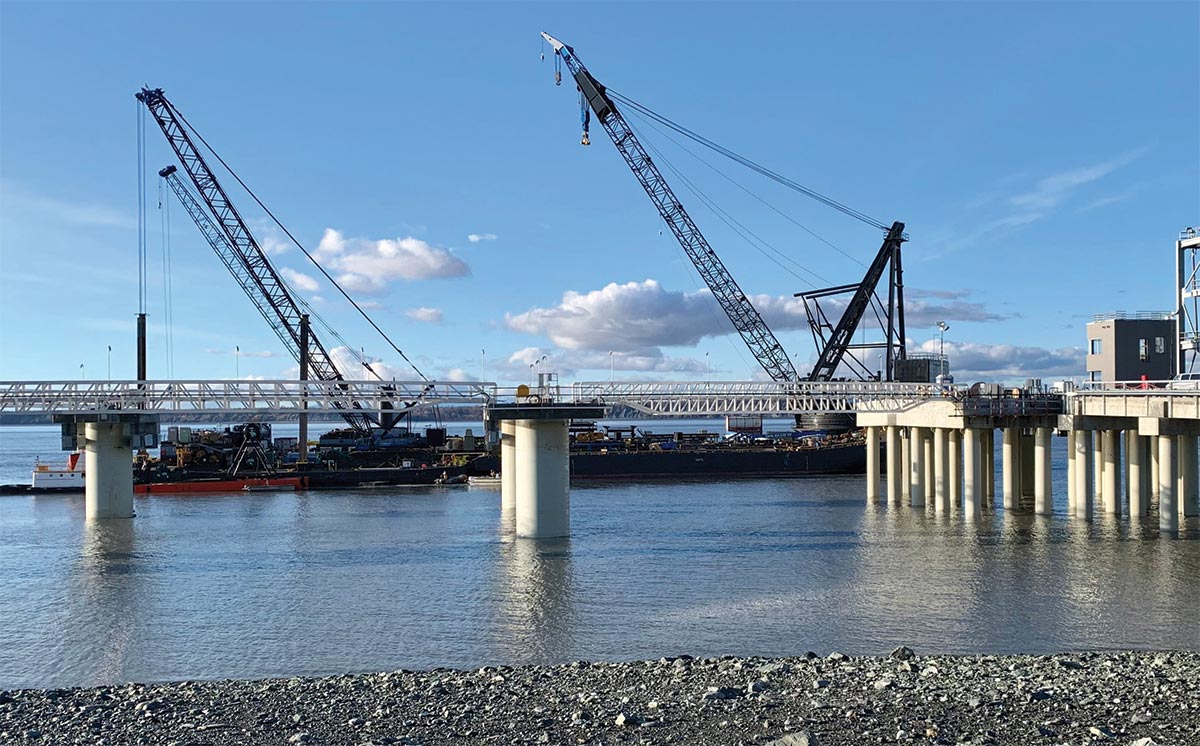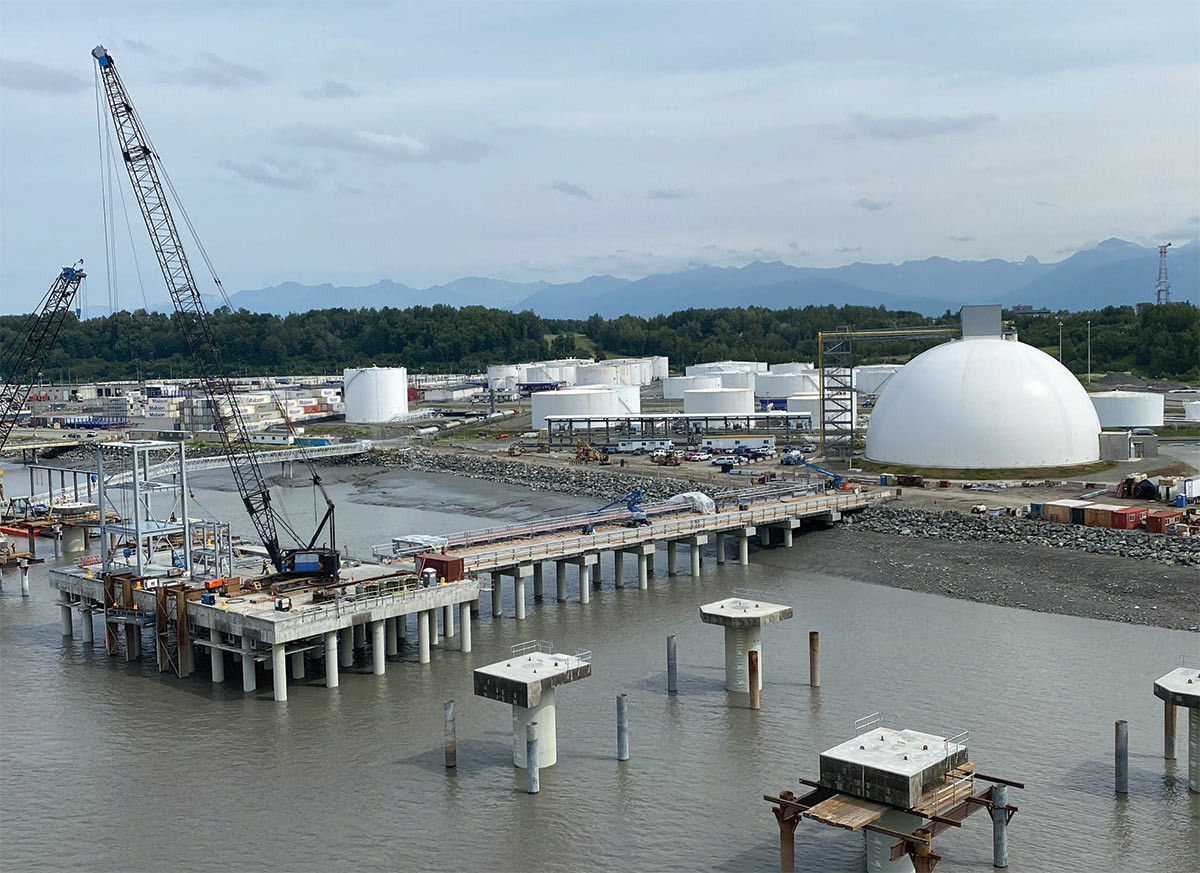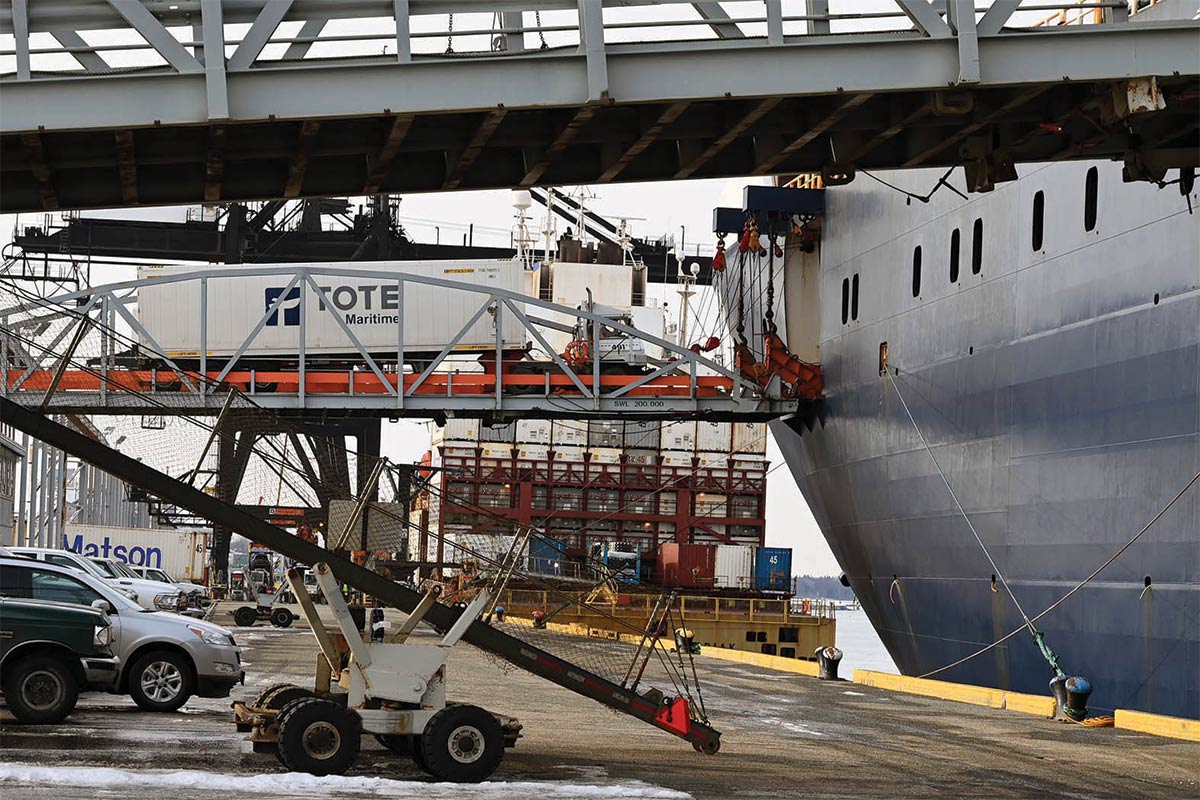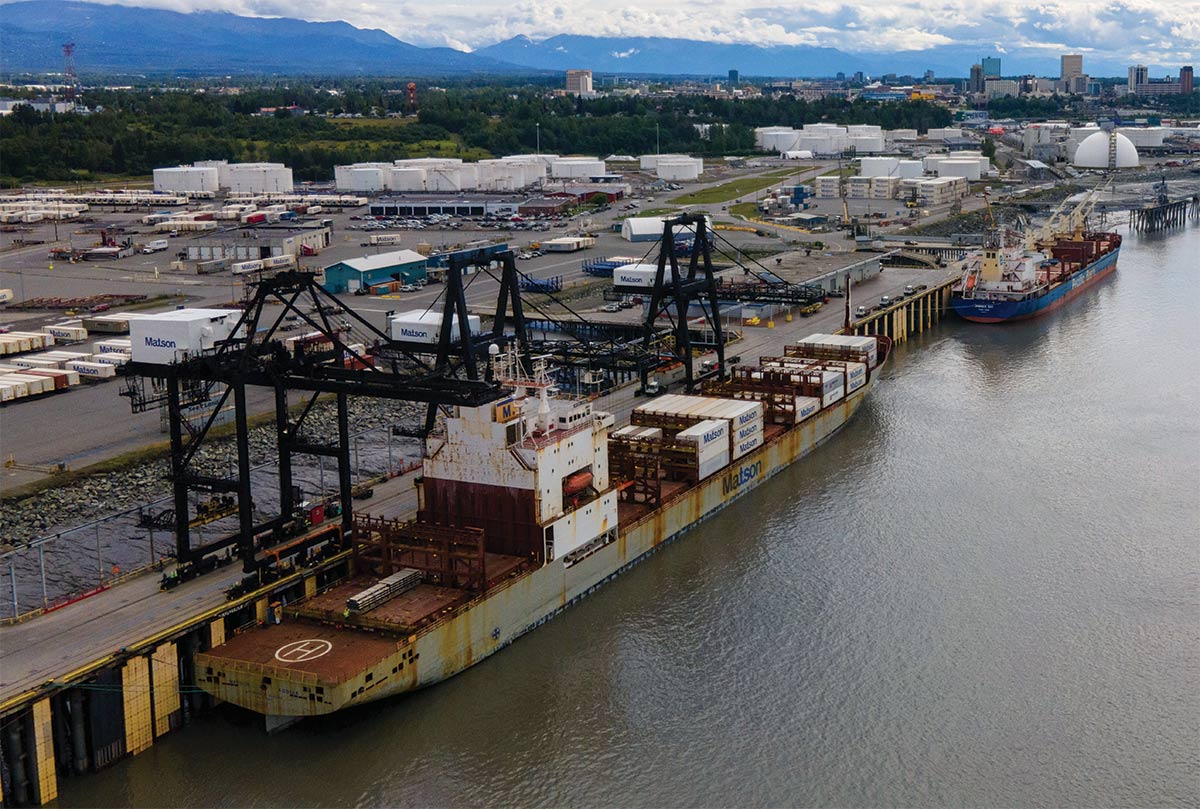he state’s entire population relies on ports and airports to connect them to the outside world. It’s Alaska’s major cargo hubs that allow vital materials to enter the state and be distributed throughout it.
“The trick with Alaska cargo is Alaskans don’t grow a lot of food up here, and we don’t manufacture a lot of goods in the state,” says Jim Jager with the Port of Alaska. “So, if you’re consuming it in the state, it’s probably being shipped in.”
Many of the state’s busiest ports and airports are undergoing changes to keep up with increased cargo traffic, which continues to steadily surge.
Nome’s Port Director Joy Baker says the project “alleviates the majority of concerns about weather,” especially for the Alaska Marine Lines (AML) barges that frequent the port. “Right now, we have the large AML barges coming in, and if you’ve got a bump out on the water in Southeast or Southwest, it’s very uncomfortable for them to get alongside the barge with the tug—it’s just a real challenge,” Baker says. “They’ll either tow in if there’s minimal winds and they grab ahold of the barge so they can push it into the dock, but it’ll delay.”
The new project will include the addition of an “L-shape” to the existing causeway which, working with the new deep-water basins, will “break the swell so the vessels can approach from the southeast and east and be able to come in, make it up to the barge, and push it into the dock fairly easy without the impact of the current and the swell on the surface of the water making it extremely difficult,” according to Baker.

Other recent projects the Port of Nome has undergone include the replacement of a concrete ramp in the inner harbor that, according to Baker, serves as one of only two ramp options for transloading cargo from the mainlines from Seattle, Anchorage, and Seward. “Our transshipping purpose being our hub, we have a high ramp and then a launch ramp that doubles as a second cargo ramp—the vessels use it to get in and out of the water and the cargo vessels use it to load and unload equipment and cargo when the other dock is busy with other vessels doing the same thing,” she says. “That is being replaced.”
While Baker notes that it seems as though the port is experiencing some new project almost around the clock, the port director also recognizes many of the improvements should have come a long time ago.
“It’s primarily because of the state and federal funding for the project in the area,” Baker says of the influx of cargo-related projects. “It’s long overdue—we went through a period where everybody knows the state kind of sunk in that recession, and we saw the dip in the construction mobilizations and demobilizations coming through and the export of gravel material—we saw the dip, but it seems like a lot of those projects are moving nowhere near the amount they would if there was funding. The construction projects are growing, and we’ve had a number of project materials and equipment come through Nome going to projects recently.”
The state’s busiest shipping port is perhaps the closest to seeing changes as it nears the completion of its new Petroleum and Cement Terminal (PCT). The PCT will give the port a pile-supported dock south of its existing terminals and alongside the Alaska Basic Industries cement plant. The PCT project is the first phase of the Port of Alaska Modernization Program, which is expected to be entirely completed by 2024.
Port of Alaska

Port of Alaska
The port is maintaining a strategy of “build, demo, build, and demo,” Jager says, pointing out that construction began south of the port’s existing docks. When the Port of Alaska Modernization Program is complete, Port of Alaska will have a dock that’s slightly shorter than the existing dock located about 400 yards south of the existing location and about 150 feet further into the ocean.
According to Jager, the PCT portion of the project is critical due to corrosion that continues to build on the existing Petroleum Oil Lubricants Terminal 1. “One of the issues we suffer here in Anchorage is our wharf piles have a condition called accelerated well water corrosion,” he says. “It’s actually a fairly common thing in northern ports; if you’ve been to Norway or Russia or other northern ports, they have the same issue. There’s a critter in the mud—a microbe—that in the area of the pile that is near the mud that gets occasional oxidation from extreme low tides, your corrosion is extremely accelerated.”
The PCT was expected to be complete by December, though an increase of beluga whale activities near the port has caused delays. “We’ve had a lot more work stoppages this year than we did last year,” Jager says. “We had contingencies worked in for the work stoppages, but all of the beluga activity is pushing us a little bit. A huge challenge has been the permitting, specifically the permitting for the endangered marine mammals. Building this facility without disturbing whales or with minimal whale disturbance has been a challenge.”
Even with unanticipated delays, ceasing operations is not an option at the Port of Alaska. “We have to stay open the whole time. Eighty percent of Alaskan container freight is coming across our dock, and Alaskans need that to eat,” Jager says. “We can’t afford to close the dock down, that means we have to keep everything open.”
“Of everything that comes into the state, about half crosses the Port of Alaska docks and about half of the cargo that crosses our dock ends up at a final destination outside of Anchorage,” Jager explains. “Port of Alaska is the place where most of the containers are coming in, and it’s also where most of the fuel is coming into Southcentral Alaska. Basically, 100 percent of the fuel consumed at JBER [Joint Base Elmendorf-Richardson] crosses our dock, about 60 percent of the fuel consumed at Ted Stevens International Airport crosses our dock. That not only has statewide and nationwide but worldwide implications because Ted Stevens last year was the fourth-busiest cargo airport on the planet by tonnage landed.”
Szczesniak attributes some of the airport’s recent cargo growth to a COVID-19-related e-commerce boom, though the director also acknowledges the airport had been trending to become a conduit between North America and Asia long before the pandemic began.
“From our perspective, e-commerce is definitely driving a lot of that growth,” Szczesniak says. “We were anticipating that to happen, but it’s just been condensed into such a short period of time.”
In order to keep up with the increased cargo demand while helping ANC maintain its status as a prominent cargo hub, the airport has a series of cargo-related projects in the works with a total construction cost of more than $1 billion. Among the biggest projects is IC Alaska’s planned maintenance hangar that will increase the airport’s ability to house jumbo jets while also offering additional warehouse space at the south end of the airport. Furthermore, 6A Aviation has proposed a 195,000-square-foot warehouse and six parking positions for cargo jets; Alaska Cargo and Cold Storage is building a $200 million refrigerated warehouse; and UPS and FedEx both have plans to include their respective cargo hubs within the airport.
“Cargo and Cold Storage and 6A Aviation—both of those have their leases signed,” Szczesniak says. “IC Alaska, the lease signing on that project is imminent, and then FedEx and UPS are going through their processes to get those projects approved by their Board of Directors, and once those are through the board of directors process, we’ll execute leases with them.”
Port of Alaska
Port of Alaska

“It’s not a ‘build it and they will come’ scenario,” he says. “They are already here. The airplanes are here. The problem is they can’t be efficient because we have no infrastructure for them to do cargo transfer stuff. With these new projects, that will definitely enable the aircraft to be more efficient by doing the cargo transfer here.”
Port of Alaska

Port of Alaska
“We see that as a catalyst for future development in and around the Anchorage economy because of the fact that we might be able to do more with the cargo that’s here—some value-added services to the stuff that comes through here,” Szczesniak says. “And then obviously the cold storage facility is going to be an excellent conduit for Alaskan seafood and peonies and stuff that needs that cold storage option here. That will get us some higher-margin products that we can ship out of Anchorage—the example is taking a fish from the Bering Sea into Anchorage and then Anchorage to Asia, they could actually sell it fresh and not frozen because they will be able to keep it cool on that relatively short journey to Asia.”
Port of Alaska

Port of Alaska
“We sit in the exact perfect spot that gives us the ability to capture lots of Asian traffic and lots of North American traffic and connecting those markets,” he says. “As an example, we have pretty much daily flights from Halifax, Nova Scotia—747 flights just filled with lobsters going into Asian markets. There’s weird and cool stuff like that, but we at the airport are always trying to open new destinations to be able to get that cargo hub and spoke effect here. Vietnam was definitely a target of ours, and so we’ve seen an increase in that market.”
Port of Alaska

Port of Alaska